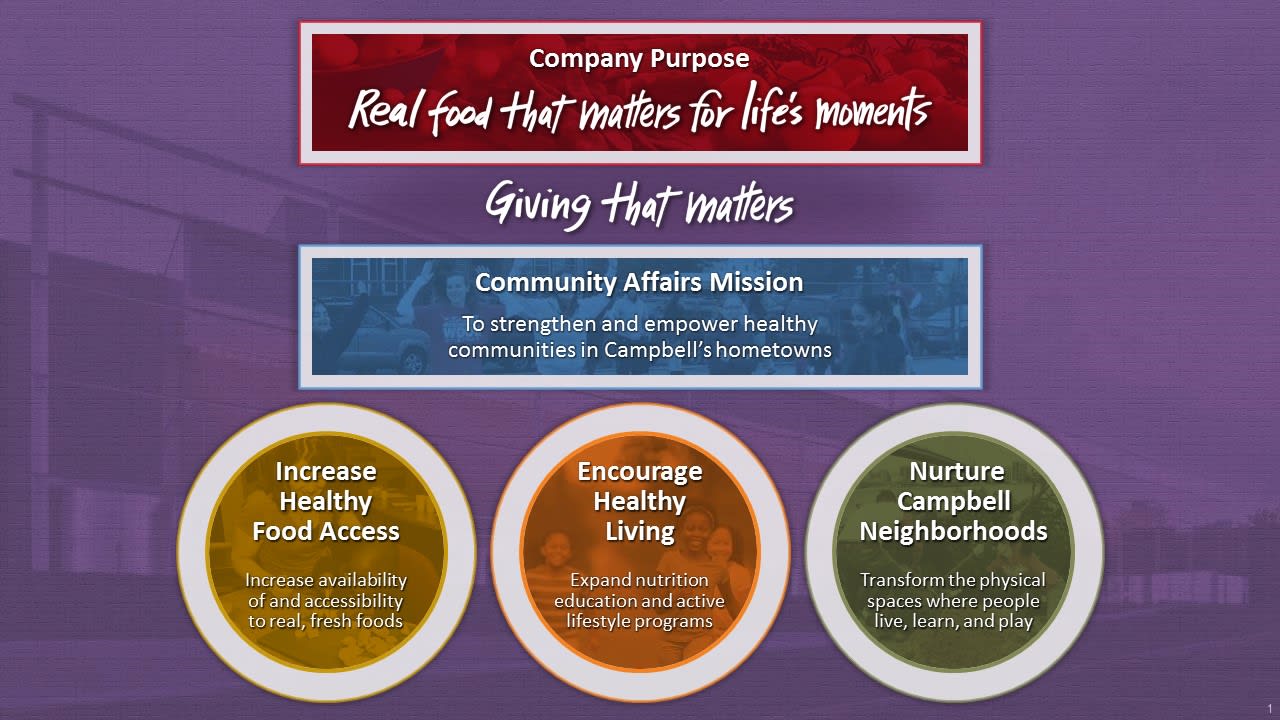What is the purpose of a corporation? Most 20th-century American executives agreed: corporations exist to maximize returns to shareholders. Famed economist Milton Friedman argued that executives should focus on maximizing shareholder return to the exclusion of social initiatives.
Only recently have prevailing views changed. In April 2019, the Business Roundtable released a new “Statement on the Purpose of a Corporation” signed by 181 chief executives including Amazon’s Jeff Bezos, Apple’s Tim Cook, and JP Morgan Chase’s Jamie Dimon.
“CEOs work to generate profits and return value to shareholders, but the best-run companies do more,” read the statement from America’s largest CEO trade association. “They put the customer first and invest in their employees and communities.”
Today’s leading companies seek to maximize stakeholder value – the social and economic returns not only to shareholders but also to employees, customers, and their surrounding communities. Profits are only part of the equation. Socially responsible companies can maximize stakeholder value through direct investments in stakeholders’ health, education, and environment.
Compared to Friedman’s Shareholder Theory, socially responsible companies demand more complex decisions about resource allocation and corporate governance. Executives who seek to maximize their companies’ social capital and corporate social responsibility (CSR) will find a few easy answers, yet there are several principles that leaders can follow.
Here are five CSR strategies that socially responsible companies are using today.
1. Promoting Healthy and Inclusive Workplace Cultures
Social responsibility starts with workplace culture and your internal community. Organizations who keep this in mind, create environments in which their own employees can thrive and excel.
In 2018, a viral video sparked protests over racially-motivated arrests of two African-American men at a Philadelphia Starbucks. Starbucks responded by closing Starbucks stores across the country for a four-hour racial bias training. Sephora similarly shut down its stores for a one-hour diversity and inclusion training in 2019.
Those training sessions were a step in the right direction to maximizing shareholder value. High-visibility training efforts allow companies to communicate their values across all stakeholder segments, but companies need to go beyond a one-day focus on diversity and inclusion. Organizations must recognize hr or diversity training as just one piece of a larger, ongoing CSR strategy to establish a positive company culture.
Socially responsible companies should require managers to translate the lessons of diversity and inclusion training to small-group and 1-on-1 settings. A robust workplace culture conversation also encompasses topics like physical health and mental wellness.
A strong workplace culture creates positive feedback loops that enhance a company’s social responsibility mission. Employees are more likely to do their best work and help their company succeed when they feel seen and heard.
A successful and happy company attracts top talent who appreciate the company’s culture and positively contribute to the company’s culture. Culture-bearing employees are more likely to bring those inclusive values into their families, social circles, and communities and buy-in to company-sponsored corporate social responsibility strategies and initiatives.
2. Designing Goals with Measurable Impact
Socially responsible companies set measurable goals. Measurable goals keep organizations accountable to themselves and stakeholders.
CSR leaders design goals with multiple priorities in mind. These priorities include community impact, internal business practices, marketing reach, and public and government relations.
Executives should focus first on metrics that relate directly to the performance of a CSR strategy. If, for example, a program targets changes in the firm’s supply chain, executives should set clear and objective benchmarks. The firm should evaluate supply chain changes through raw numbers, percent changes, and industry comparables and communicate these changes to internal and external stakeholders.
The time frame is also an important goal-setting consideration. CSR leaders should consider short-term and long-term goals for a program. Some CSR strategies and programs demand longer time horizons than others. It is up to the CSR leader to set goals that accurately reflect these time horizons.

Campbell’s Soup Company provides an informative and visually-appealing outlook on its CSR metrics here. Campbell’s defines specific targets and provides accompanying metrics that measure progress in real-time.
The company provides itself with an objective deadline for each target. Importantly, they exercise transparency in the scope of these targets: the company indicates which targets relate only to American operations and which targets relate to its global operations.
Once a company establishes core metrics and time frames that relate to their corporate social responsibility strategies, the company can evaluate metrics that relate to other priorities, such as customer loyalty and improved reputation.
Without the support of clear and honest data, socially responsible companies invite consumer skepticism. Consumers value brand transparency more than ever in a time of fake news and rapid change. Eighty-six percent of American consumers say that transparency from businesses is more important than ever before. Showcasing these metrics gives your consumers a different view into how your organization is impacting the community.
Socially responsible companies should be able to measure the effectiveness of their corporate social responsibility program and adapt programs accordingly. Armed with an understanding of what success looks like, CSR leaders will have significant leverage to shape their organization’s social impact through the implementation of effective CSR strategies.
3. Aligning Community Impact Goals with Business Practices
Successful socially-responsible companies identify causes that align with their corporate mission, employee base, and communities. These organizations then advance these causes through authentic and sincere actions.
How does a company express authenticity in their corporate social responsibility strategies? Authenticity starts with skin in the game. A company demonstrates skin in the game when it makes material sacrifices or adjustments. Organizations should evaluate their community impact goals alongside their business practices. Executives should work toward alignment between these goals and practices.

Unilever demonstrated alignment between philanthropic goals and business practices when it launched its Farewell To The Forest campaign in 2015. Unilever wrote checks to non-profits like the World Wildlife Fund but also went a step further.
The transnational consumer goods company reaffirmed its commitment to significant supply chain adjustments, including its 2020 goal to source four key commodities with zero net deforestation.
Pfizer has similarly adjusted their business practices to meet its philanthropic goal of expanding healthcare access. The drugmaker announced in 2016 that it would offer vaccines to relief organizations at reduced prices. Pfizer also leads an education initiative to prevent the over-prescription of antibiotics despite potential impacts to its bottom line.
Unilever and Pfizer have successfully aligned their business practices with their philanthropy. In doing so, they have communicated an authentic social and brand message to consumers and other stakeholders. Their commitments do not blindly capitalize on prevailing trends. Rather, the companies’ commitments directly affect how their business practices impact stakeholders on a day-to-day basis.
It is sometimes too tempting for companies to pursue trendy corporate social responsibility initiatives that do not match their business practices. The term “greenwashing” has recently come into vogue.
Greenwashing refers to the corporate practice of misleading consumers that a company’s products, services, or operating practices are socially or environmentally responsible. This is why it’s so important for a company to remain authentic to what its community impact goals are and how these align back to business practices – otherwise, they may face negative backlash.
4. Socially Responsible Companies Leverage Their Core Capabilities
Companies also achieve authenticity when they play to their strengths. The most impactful socially responsible companies take advantage of their strongest assets.
JetBlue’s strongest asset is travel. The airline crafted its Flying It Forward campaign in 2014. The campaign asked a simple question: “If you were given one flight to spread good, where would you go?”

The campaign offered free flights to passengers who pledged their trip toward “making the world a little better.” The program flew recipients across the Americas to serve underserved communities and inspire others. Recipients paid their trip forward by choosing the next free flight recipient.
JetBlue has also leveraged its strongest asset through education. The airline supports the Aviation Career Education (ACE) Camp.
JetBlue employees help underprivileged high school students understand the science, technology, engineering, and math behind aviation. At least one ACE student has become a JetBlue pilot.
By focusing on the flight, JetBlue achieves authentic impact through its corporate social responsibility initiatives. It is easy for companies to throw money at social causes without a focus. The best socially responsible companies achieve clarity of purpose when their leaders reflect on their core capabilities.
5. Soliciting Feedback and Engagement to Maximize Stakeholder Value
Socially responsible companies must listen to all of their stakeholders (internal and external communities). The strongest community initiatives incorporate feedback from employees, consumers, and the individuals that the initiative impacts.
According to Glassdoor, 75% of employees and job seekers expect their employer to support local community causes through donations or volunteer efforts. Employee engagement strengthens the connection between a company’s social responsibility program and workplace culture.
CSR and HR leaders should educate employees about initiatives and how they can get involved. Corporate Social Responsibility strategies, goals and metrics can play an important role in these conversations.
Campbell’s “Dollars For Doers” program has successfully engaged employee volunteers. The company awards a $500 grant to partner organizations for every 25 hours an employee volunteers. The program typically logs over 12,000 volunteer hours per year. HR departments win with social impact strategies that engage employees. Workforce studies suggest that purpose-oriented employees tend to stay with their companies and are more likely to promote their employers than their peers.
Consumer feedback can be more difficult to process than employee feedback, but the former is no less important when it comes to social impact.
The last decade has represented a sea change in consumer activism. Social media has removed barriers between brands and consumers. Over the last decade, individuals and organizations have used social media to protest brand practices and drive change.
In 2010, Nestle came under fire from a Greenpeace-produced viral video about unsustainable palm oil. The food company listened to upset consumers. Since then, Nestle has taken a proactive approach to strategies of CSR and has organized stakeholder forums to gather feedback on initiatives related to sustainability, water stewardship, and job creation.
CSR leaders who practice active listening can help their brands take control of the conversation and maximize stakeholder value. When brands make their stakeholders feel heard, everybody wins.
Socially Responsible Companies Play the Long Game
These corporate social responsibility strategies cannot happen overnight – they require long-term commitment and planning. However, In the short-term, company leaders can benefit from honest reflection and conversations with all of their stakeholders. These conversations should lay the foundation for a strong path in rising in the ranks of the world’s most socially responsible companies.
To recap, here are five strategies that companies can incorporate into their corporate social responsibility initiatives to maximize stakeholder value:
- Promote Healthy and Inclusive Workplace Cultures
- Design Goals with Measurable Impact
- Align Community Impact Goals with Business Practices
- Socially Responsible Companies Leverage Their Core Capabilities
- Solicit Stakeholder Feedback and Engagement to Maximize Stakeholder Value

